Ski Trip Packing List: A Complete Guide for the Slopes
Trust me, there’s nothing worse than arriving at the slopes only to discover you’ve forgotten something essential.
It’s a sinking feeling I know all too well, and it can quickly turn your ski adventure into a costly ordeal! Like the day I left my ski pants behind, forcing me to fork out a small fortune for a replacement pair that I didn’t even like.
The lesson learned: CREATE A SKI TRIP PACKING LIST!
Whether you’re a seasoned skier or this is your first ski trip, this packing list will help you gather all the ski essentials you need for your next ski trip.
Say goodbye to packing worries and focus on shredding the slopes.
Now, let’s get packing!
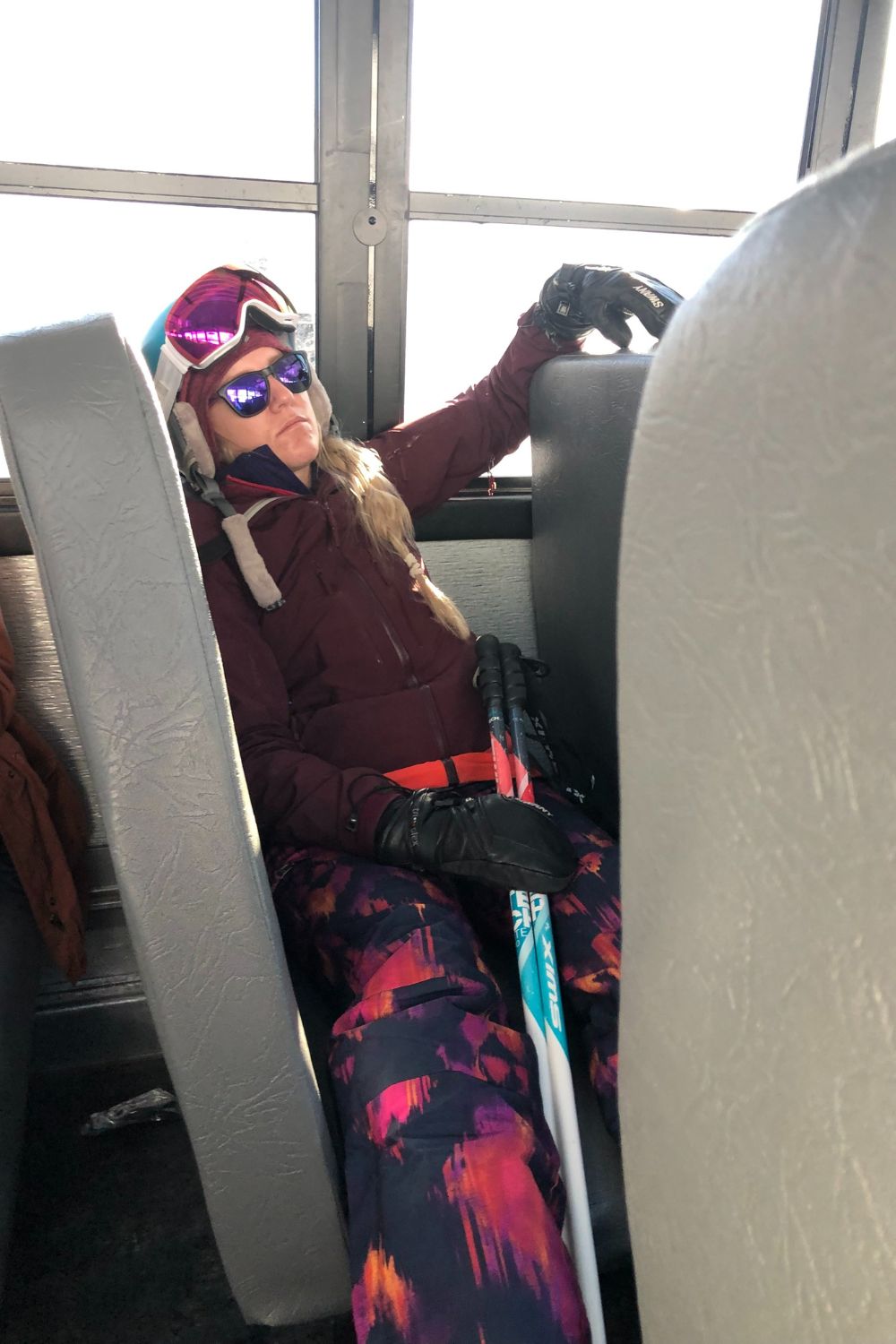

Ultimate Ski Trip Packing List
Ski Clothing
When it comes to ski clothes, getting the right ski gear can make or break your skiing experience. Here’s a breakdown of what you need to pack:
Base Layer: Thermal tops and bottoms
The base layer is your first line of defense against the cold air. Opt for base layers that are moisture-wicking to keep sweat away from your body, making sure you stay warm and dry on the slopes.
I prefer Merino wool base layers over synthetic options!
If you’re wondering why Merino wool is the best, here’s why: merino wool base layers not only keep you warm on the slopes, but they also have this amazing superpower – they resist odors! So, even after a full day of skiing, they won’t be stinking so you can wear them again the next day if you choose.
Now, merino wool base layers can be a bit pricier. But you get what you pay for.
I’ve been rocking my soft merino wool base layers for years, and they’re still my go-to choice. They’re like old friends, reliable and comfy as ever
If you’re on the hunt for soft Merino Wool base layers, look no further than my all-time favorites: Smartwool Top and Smartwool Bottoms. I can’t recommend them enough! You’ll love them!
Mid Layers: Sweaters and fleeces
When it comes to extra layers, you can’t go wrong with sweaters and fleeces.
This light weight insulating layer adds that extra dose of warmth without the bulk.
Make sure to pack a few options that are breathable and comfortable, ensuring you stay warm on the slopes.
I am loving this North Face Fleece Right now!
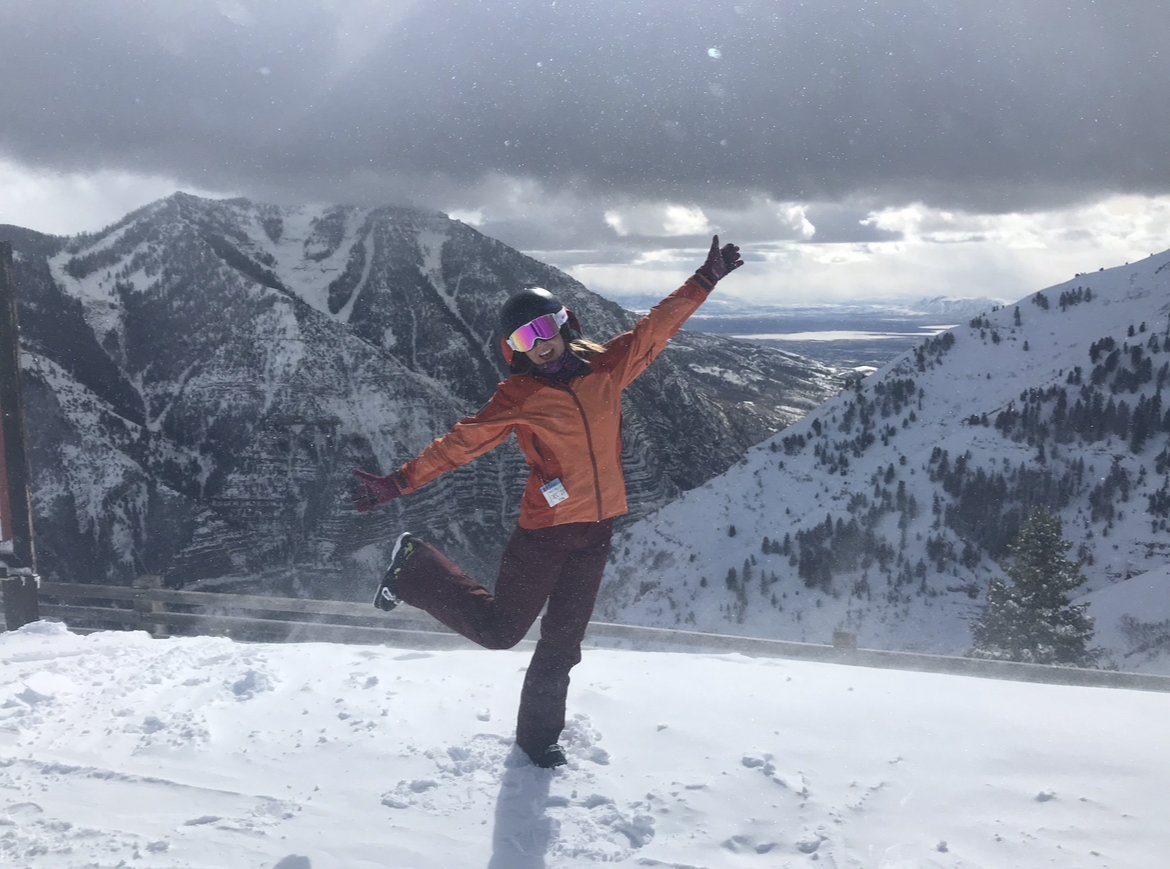
Outerwear
Ski jacket:
When it comes to ski jackets, you’ve got two options to choose from: the insulated jacket and the shell jacket.
My personal preference leans toward the shell jacket style. I just love how lightweight and non-bulky they are.
With an outer shell jacket, I get to play around and adjust my insulation by picking the perfect mid-layer pieces for the weather each day.
If you’re in the market for a ski coat that’s truly built to last, I can’t recommend my favorite Arcteryx ski coat enough. My first Arcteryx ski coat has been my favorite for 15 years and still looks brand new. This is proof that when you invest in quality, you get gear that stands the test of time.
Ski pants:
When it comes to your ski essentials, a good pair of snow pants/ski pants is absolutely crucial.
They act as your protective shield against the elements, keeping your legs warm and dry.
For ultra-chilly conditions, insulated pants are best, while shell pants provide the flexibility you need when the weather is milder on spring skiing days.
So, gear up with the right snow pants and get ready for a comfortable and enjoyable ski trip!
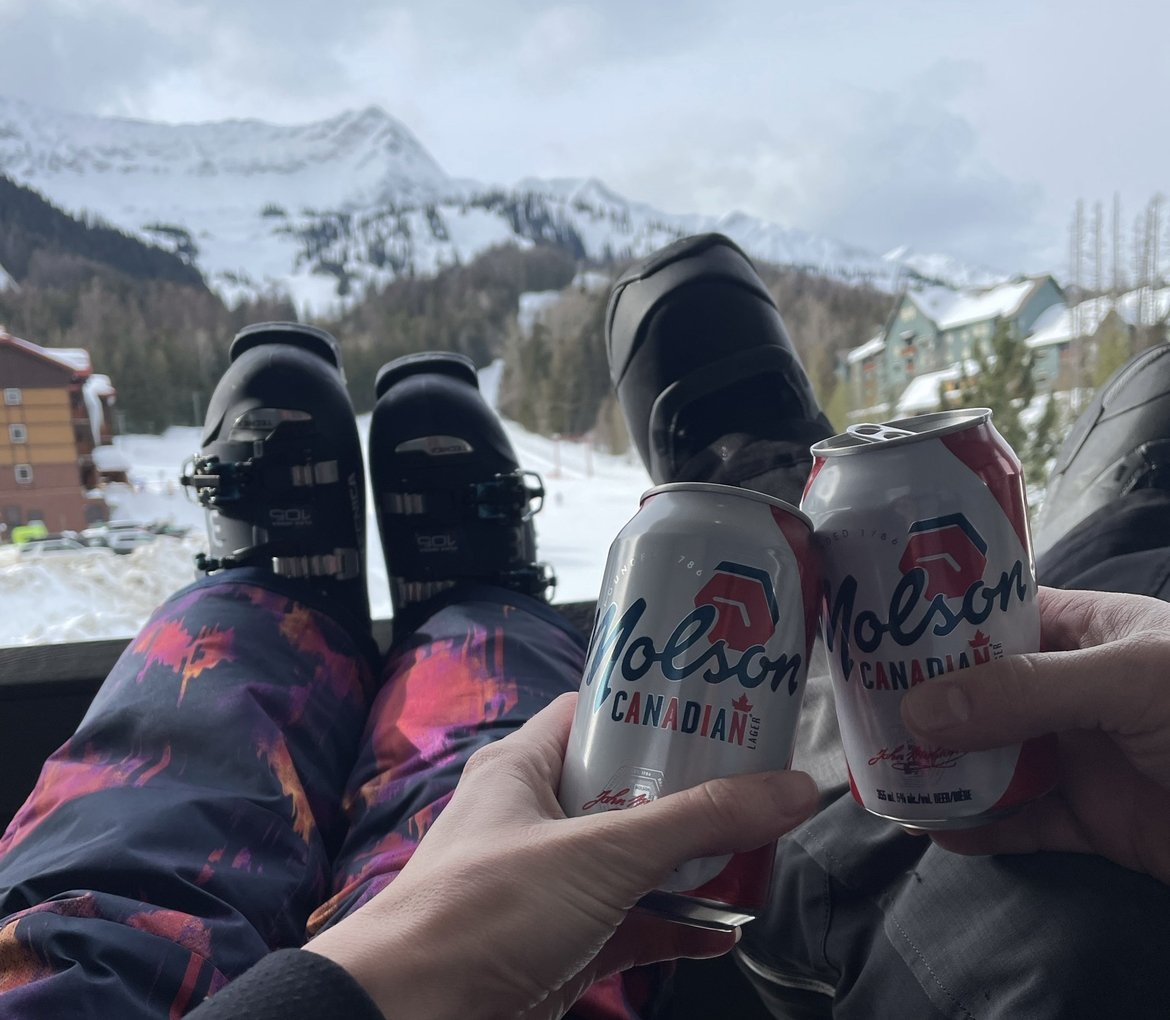
Accessories
Gloves or Mittens:
When it comes to braving the cold on the slopes, your hands deserve the best.
Invest in a good pair of ski mittens or gloves to shield them from the elements.
Look for options that are not only insulated but also waterproof, and ensure they fit relatively snug to maintain dexterity.
Don’t forget to consider glove liners for that extra layer of warmth. Smartwool has a great pair!
Ski Socks:
When you’re putting together your packing list, remember the golden rule: warm, moisture-wicking socks.
And make sure to pack a couple pairs! Changing into fresh ones during the day, especially if your socks get wet, can make a world of difference.
Here are the only ski socks I’ve found that actually keep my feet warm!
Pro Tip: when it comes to ski boots, thin socks are the best! Thin socks offer a snug fit, which means better control over your skis and improved circulation. Bulky socks can actually decrease circulation and lead to cold toes.
Neck Gaiter or Balaclava:
Don’t forget to pack a neck gaiter or balaclava – they’re a must.
These provide an extra layer of protection for your face and neck, ensuring you stay warm and shielded from the bracing winds on the mountain.
Trust me, you’ll be happy you have that neck gaiter!
Ski Goggles:
Ski goggles can really make or break your ski trip!
When shopping for ski goggles, consider ones with interchangeable lenses; this way, you can effortlessly adapt to changing light conditions. Your eyes deserve the best protection out there!
Helmet:
As an ER nurse, I can’t stress enough how vital a ski helmet is for your safety on the slopes.
Whether you’re a beginner or heading to a resort with helmet regulations, it’s a non-negotiable piece of your ski gear.
It’s also your best friend in keeping warm!
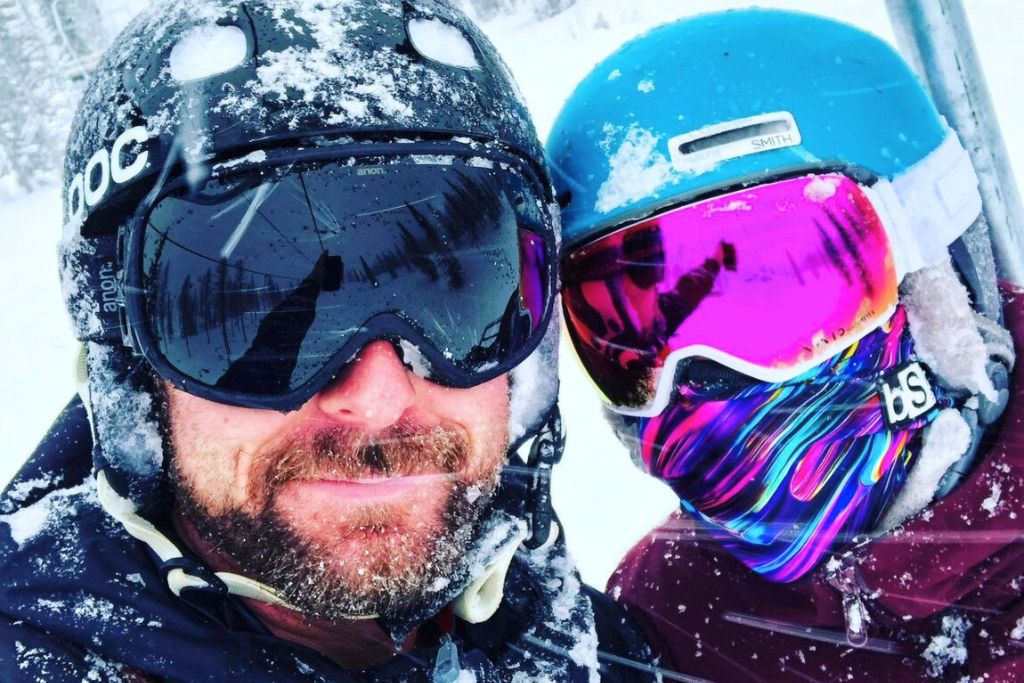
Footwear
Ski boots:
Ski boots are not just a piece of gear – they’re the vital link between you and your skis.
Make sure they fit like a glove and are perfectly adjusted.
If you’re renting skis, don’t forget to bring your own boots; trust me, there’s no better feeling than skiing in familiar and comfortable footwear.
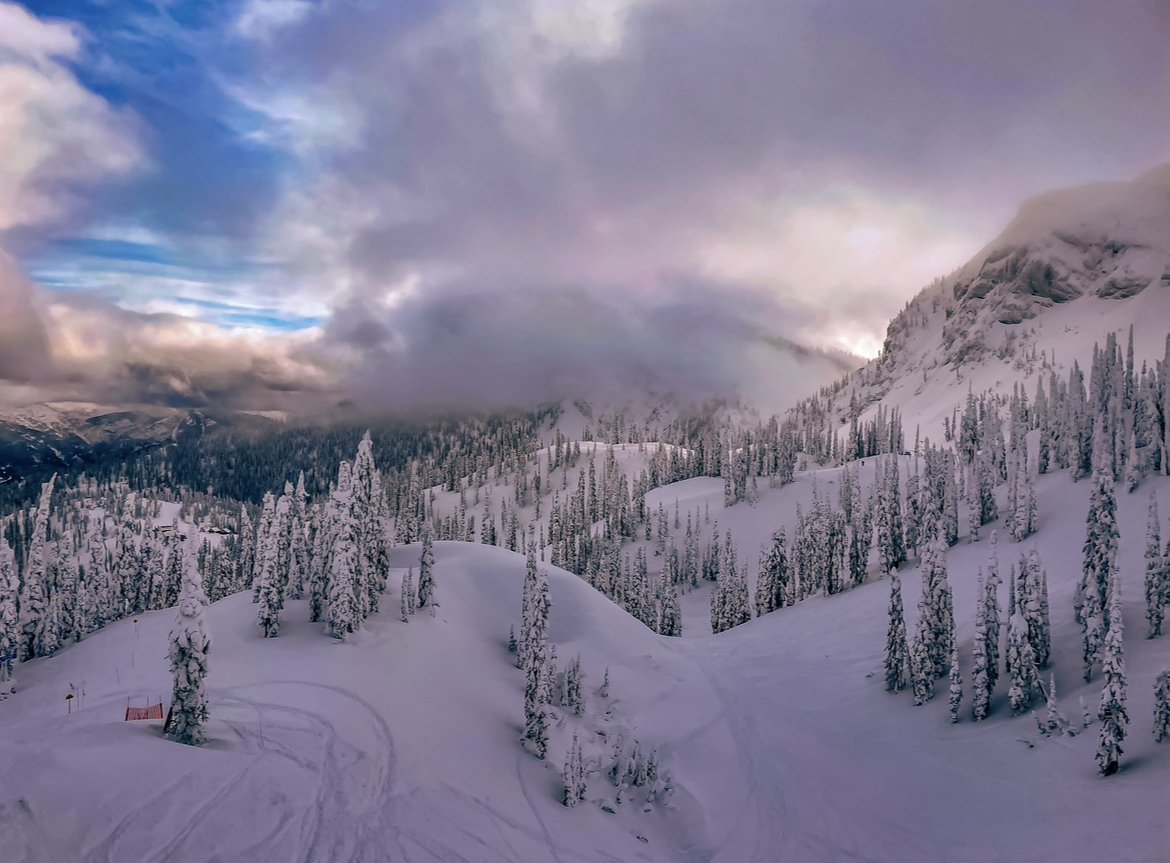
What to Wear When You’re Not Skiing
As much as you’ll be flying down the slopes, there will also be moments when you’re not in your ski gear.
Whether it’s winding down after a day of skiing or heading out for dinner, having the right non-ski clothing is key to enjoying your ski trip to the fullest.
Casual Clothing for When You’re Not Skiing
Cozy Sweaters and Hoodies:
Be sure to pack a cozy sweater or hoodie to unwind in or wear during those post-ski gatherings at the ski resorts. These items should be easy to layer over your base and insulating layers, ensuring your comfort throughout the entire trip.
Comfortable Pants or Jeans:
While snow pants are a must on the slopes, it’s also a good idea to include a comfy pair of pants or jeans for your post-ski activities.
Look for something that lets you unwind and move freely, and make sure it’s versatile enough to match various outfits.
Pro tip: consider adding fleece-lined leggings to your ski trip packing list. They’re my personal favorite when it comes to cozy bottoms for those relaxing moments after a day of skiing.
T-shirts or Tops:
For those casual moments during your ski vacation, don’t forget to pack some simple T-shirts or tops. They’re incredibly versatile, perfect for layering under your cozy sweaters or hoodies.
Bathing suit:
Most ski resorts have a sauna and or hot tub, so be sure to pack a swimsuit. My favorite way to end a ski day is by warming up in a hot tub!
Comfortable Footwear for Walking Around The Resort
Snow Boots:
Don’t forget to treat yourself to a great pair of snow boots!
These cute, waterproof snow boots are my go-to choice for leisure around the ski resort or heading to nearby restaurants.
Slippers or Indoor Shoes:
When you’re inside the cozy lodge, having a pair of slippers or indoor shoes is a must for keeping your feet warm and comfortable. Be sure to add these cozy slippers to your ski trip packing list for a perfect stay at the ski resort.
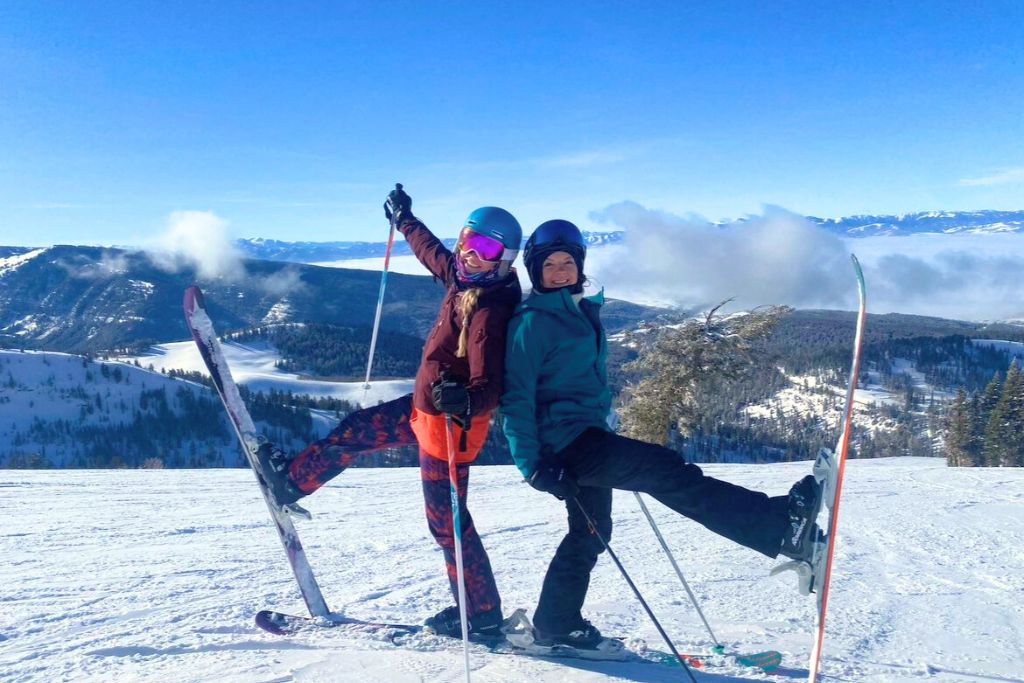
Ski Equipment
Your ski equipment is the heart of your ski trip. Making sure you have all the essential gear and equipment is crucial for a successful skiing adventure.
Skis, Poles, and Bindings
Skis:
At the top of your trip packing list are your trusty skis.
Make absolutely certain they’re in prime condition, well-tuned, and meticulously maintained.
Don’t forget to have those bindings adjusted precisely to match your skill level and preferences.
If you’re renting skis at the resort, it’s a smart move to double-check your reservations and confirm their availability.
Ski Poles:
Ski poles provide balance and stability. Make sure they’re the right length and in good condition. Remember to pack pole grips and straps if they are detachable.
Ski Bag or Carrier
When you’re heading out on your ski holiday and planning to pack skis, a ski bag is really nice to have.
This bag not only ensures the safe transit of your skis but also makes it easier to lug them around the resort.
Look for a rugged, well-padded ski bag with additional compartments designed to accommodate your ski poles and other gear.
Also, a ski boot/gear bag that can pack your helmet, ski boots, and other gear is a great idea. Here is my favorite ski boot/gear bag!
If you are hopping on a flight for your epic ski trip, check out my post, “Flying with Skis: A Skier’s Complete Travel Guide,” next.
Maintenance Tools (wax, edge sharpener)
Wax and Tuning Kit:
Proper maintenance of your skis can significantly impact your performance on the slopes.
Bring a wax and tuning kit, which should include ski wax, a waxing iron, and edge-sharpening tools.
Regularly maintaining your equipment ensures you have the best possible experience on the mountain.
Ski Pass and Documentation
Ski Pass:
Your ski pass and lift tickets are your golden ticket to the mountain. Double-check that you have your pass and any necessary reservations. Keep it in a safe, easily accessible place so you can quickly move through the lines at the resort.
Identification and Documentation:
Don’t forget your identification, such as a driver’s license, or passport. Your ski resort will probably require proof of identification.
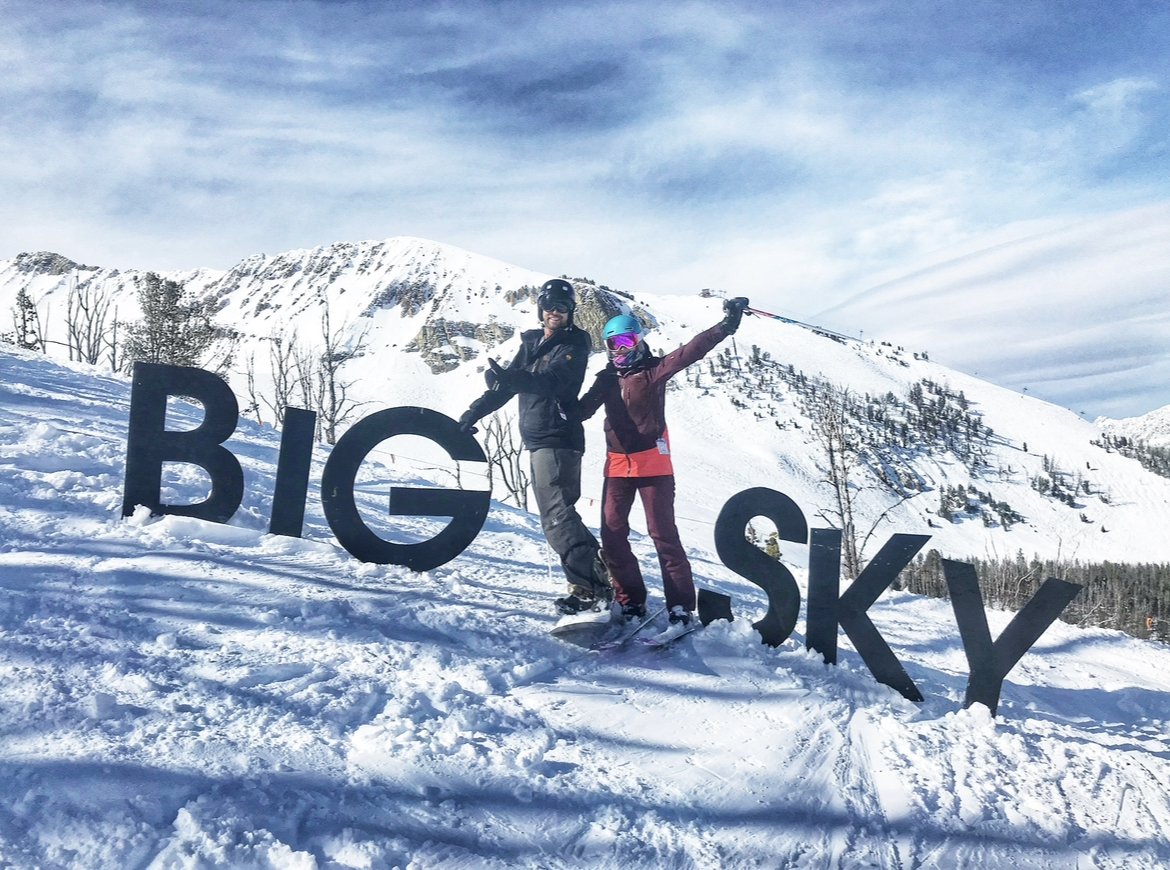
Personal Items
While skiing is the main focus of your trip, don’t forget about the personal items that keep you comfortable during your downtime. Here’s what you should include in your ski trip packing list:
Toiletries
- Toothbrush and Toothpaste
- Soap and Shampoo
- Deodorant
- Haircare Products
- Skincare Products
- Sunscreen
- Lip Balm
- Lotion
- Personal Hygiene Products
- Compact Microfiber Towel
Pro Tip: I once packed a bunch of “just-in-case” items, and my suitcase ended up bursting at the seams. Now, I’m all about packing with purpose. Think about what you’ll actually use, not what you might use.
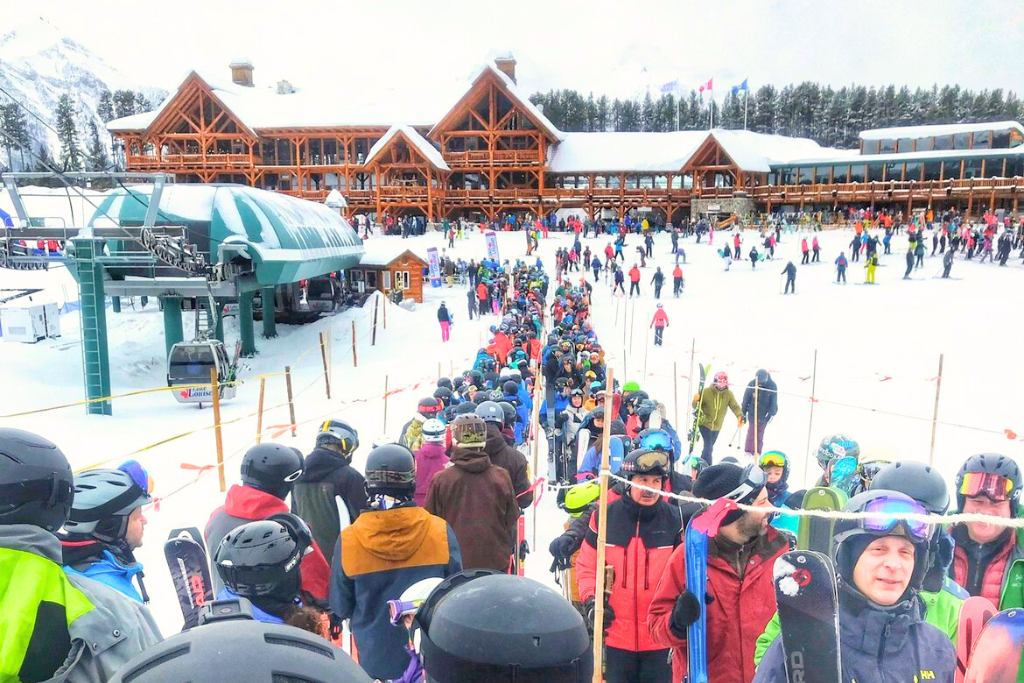
Medications
Prescription Medications: Ensure you have an adequate supply for the duration of your trip.
Pain Relievers: Over-the-counter pain relievers can be a lifesaver for those muscle aches after a day on the slopes.
First Aid Kit: A basic first aid kit with bandages, antiseptic wipes, and any specific medical items you may need.
Identification and Travel Documents
- Driver’s License or Passport
- Ski Pass or Lift Ticket Reservations
- Travel Itinerary
Cash and Credit Cards
Local Currency: It’s a good idea to have some cash in the local currency on hand, especially for small expenses.
Credit and Debit Cards: Notify your bank of your travel plans if you are leaving the country to avoid any issues with card usage while abroad.
Cell Phone and Charger
- Cell Phone
- Charger
Don’t forget your charger, and consider a portable power bank for long days on the mountain.
Pro Tip: The cold can quickly drain your battery. Keep your phone warm, and carry a portable charger just in case.
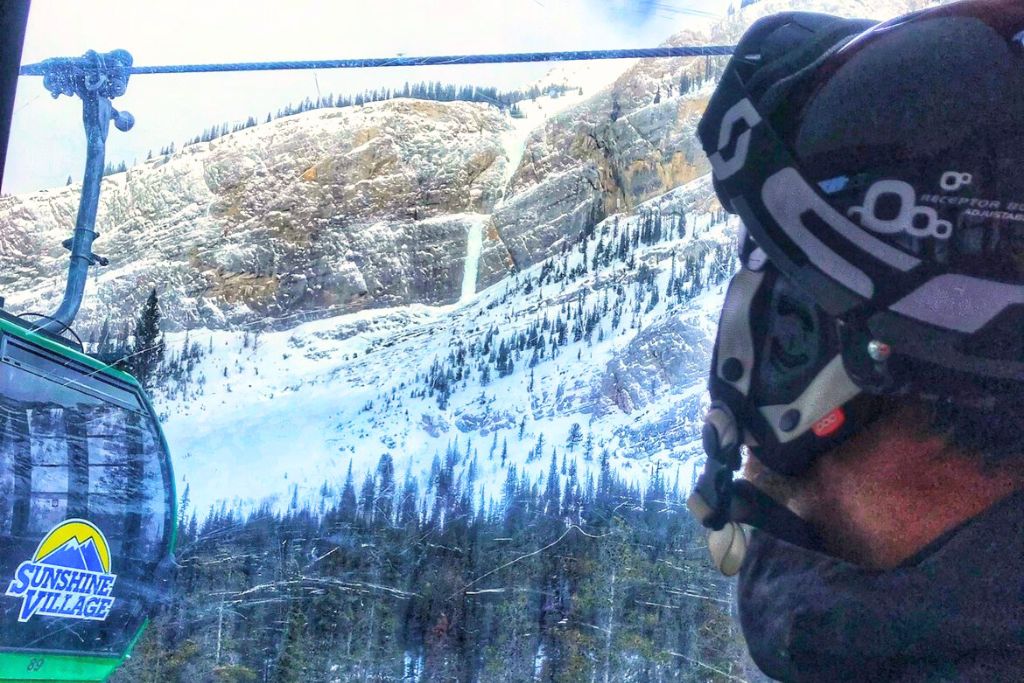
Snacks and Hydration
Skiing is a physically demanding activity, and you’ll want to keep your energy levels up throughout the day.
Here’s what you should pack:
Water bottle or hydration pack
Reusable Water Bottle: Ensure you have a durable and reusable water bottle to stay hydrated. Opt for one with insulation to help keep your water from freezing in cold temperatures.
Hydration Pack: Alternatively, consider a hydration pack, which allows you to sip water through a tube while skiing. This can be incredibly convenient and keeps you hydrated without needing to stop.
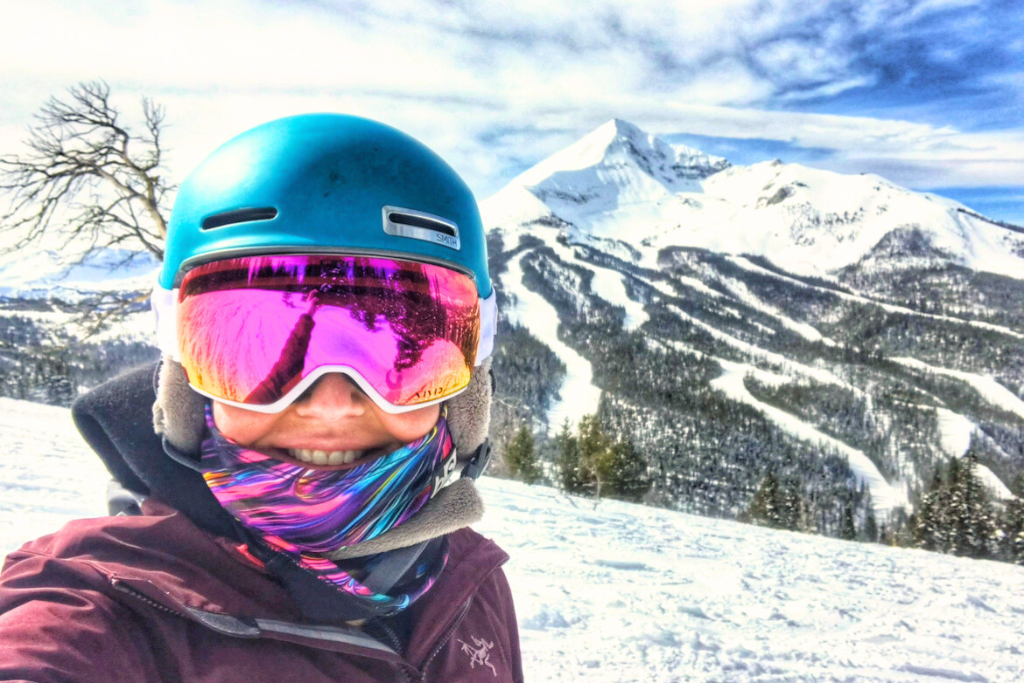
Energy bars and snacks
- Energy Bars
- Trail Mix
- Jerky or Protein Snacks
- Quick bites like crackers or cheese sticks
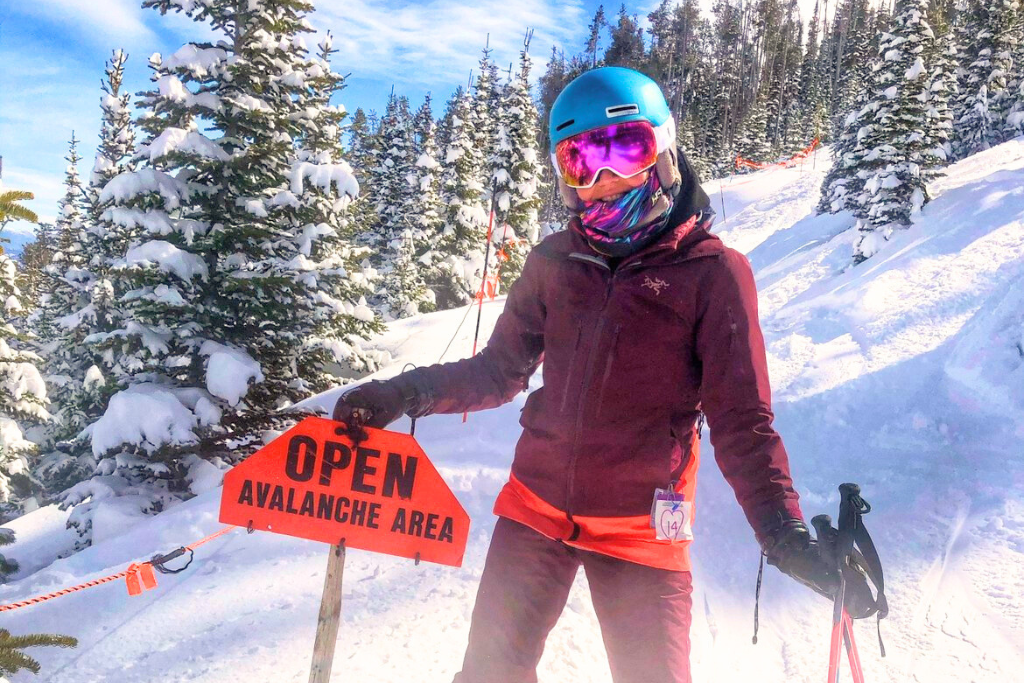
Safety and First Aid
Skiing is a thrilling sport, but like any outdoor adventure, it comes with its share of risks. Prioritizing safety and being prepared for unexpected situations is paramount.
Here’s what you should include in your safety and first aid kit:
First aid kit
- Bandages and Sterile Gauze
- Antiseptic Wipes or Spray
- Adhesive Tape
- Pain Relievers
- Scissors and Tweezers
- Emergency Blanket
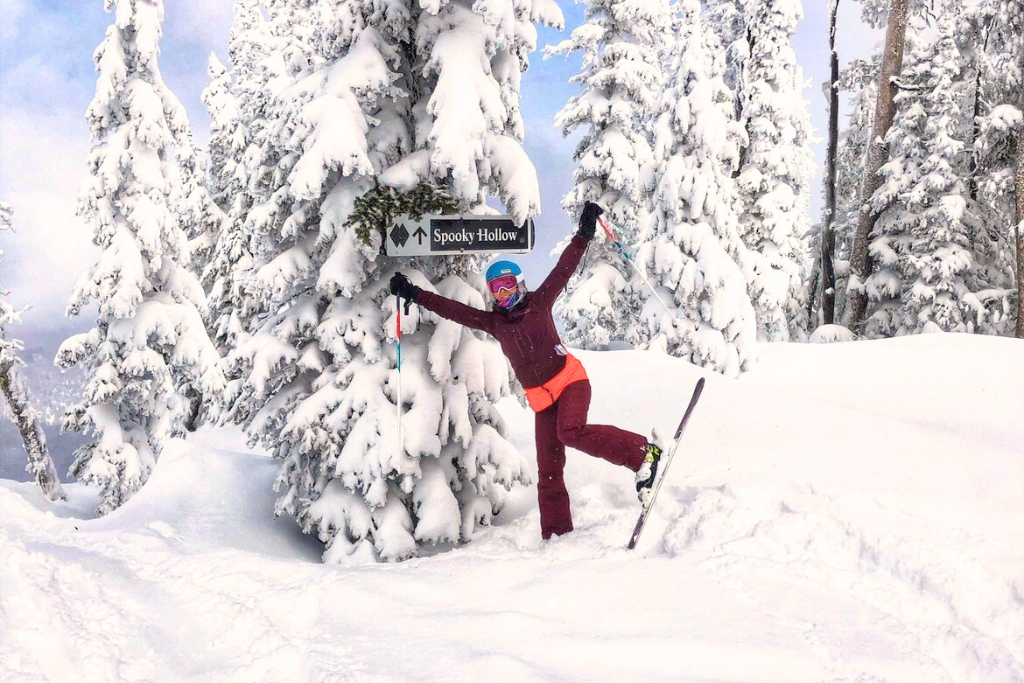
Emergency contact information
Emergency Contacts: Have a list of emergency contacts readily available. Include names and phone numbers for family members, friends, or anyone who should be notified in case of an emergency.
Medical Information: It’s important to have your own and your travel companions’ medical information on hand. Include any allergies, pre-existing conditions, and medications you’re taking.
Resort and Ski Patrol Contacts: Be aware of the resort’s emergency contact information and the location of the nearest ski patrol station.
You never know when you might need a helping hand, especially in the world of skiing. That’s why it’s super important to have your emergency contacts readily available. Trust me, as a nurse working in an ER at the base of a popular ski area, I’ve seen my fair share of ski accidents. It’s always a relief when injured skiers and snowboarders can provide their emergency contacts without any hassle.
Pro Tip: store your important numbers in your phone under “ICE” (In Case of Emergency). In moments of stress or pain, you’ll be grateful you don’t have to fumble around trying to remember
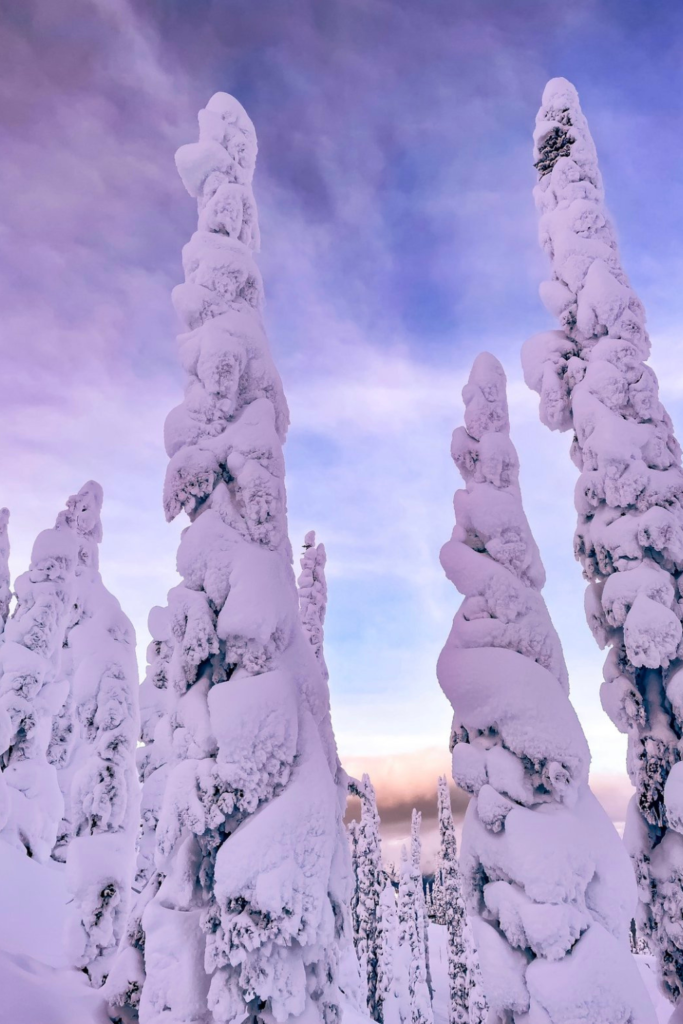
Entertainment and Electronics
When you’re not carving down the slopes or unwinding at the lodge, it’s great to have some entertainment options and electronics to keep you occupied during downtime.
Here’s what to include:
- Books
- Magazines
- E-Reader
- Earbuds
- GoPro
- Smartphone
- Charger and Power Bank
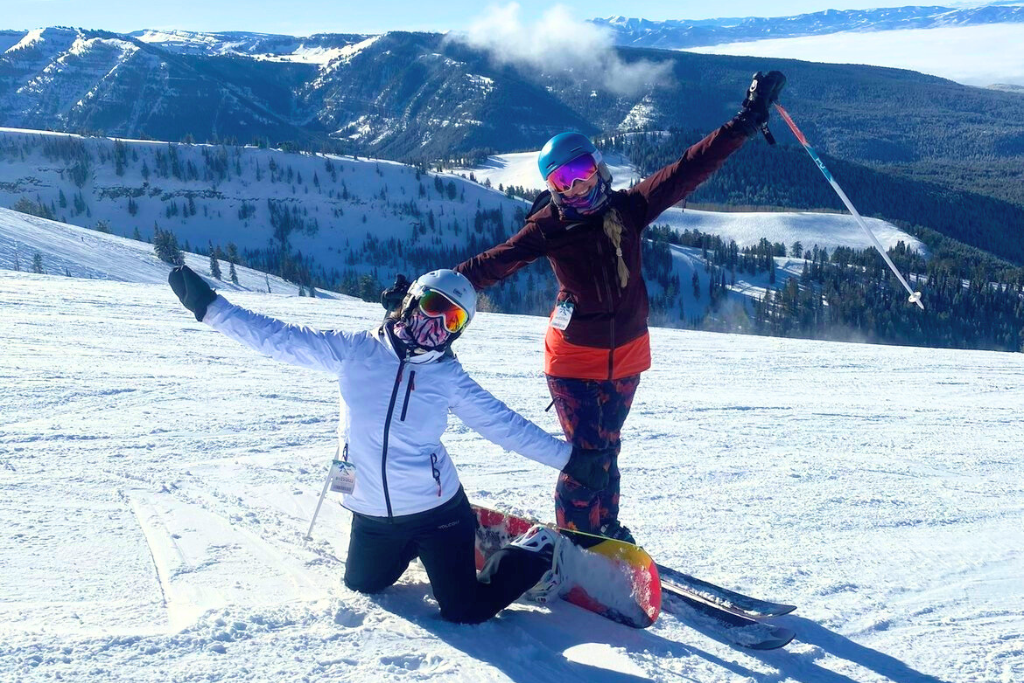
Ski Trip Packing Tips
Efficient packing can make a significant difference in how smoothly your ski trip goes. These packing tips will help you optimize your luggage space and keep everything organized for easy access:
Vacuum-sealed bags for space-saving
These nifty bags are a game-changer. They remove excess air from all your bulky winter clothes and make more room in your luggage.
Pro Tip: Keep your vacuum-sealed bags organized by sorting items by type and labeling them. It makes it easier to locate specific gear when needed.
Layering is key
If you’re skiing in a location with unpredictable weather, adopt a layered packing approach. Layering allows you to adjust your clothing based on the conditions. Pack various layers that you can add or remove as needed.
Check the Weather Forecast
Before you leave, check the weather forecast for your destination. This will help you pack the right clothing and accessories for the specific conditions you’ll encounter.
📌 Love it? Pin it!
That’s a Wrap
There you have it!
You’re now armed with the know-how to pack like a pro for your next ski trip. Whether you’re gearing up for your first adventure or you’re a seasoned snow hound, the right ski trip packing list can make all the difference.
Now go… the slopes are calling!
Catch ya later!

